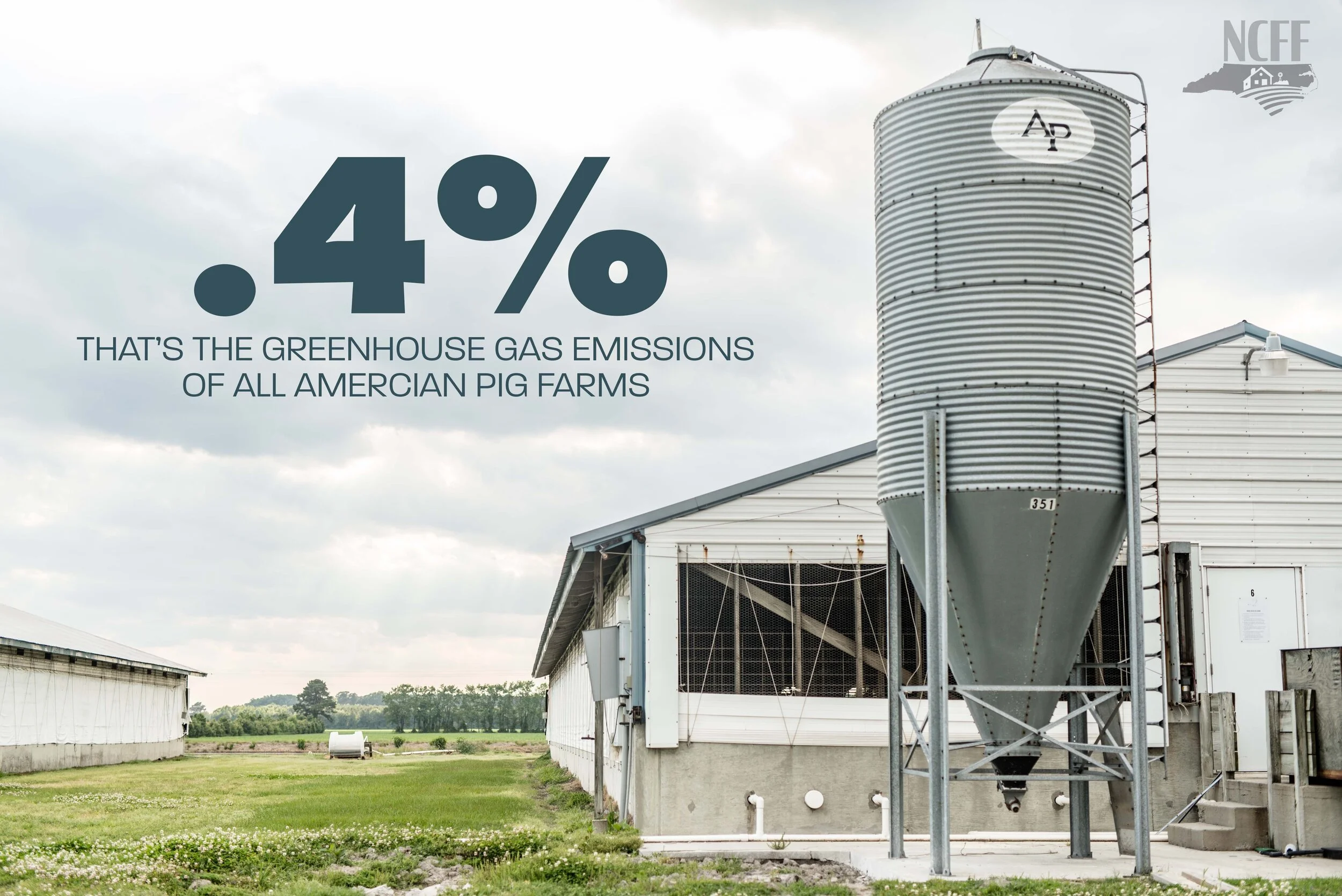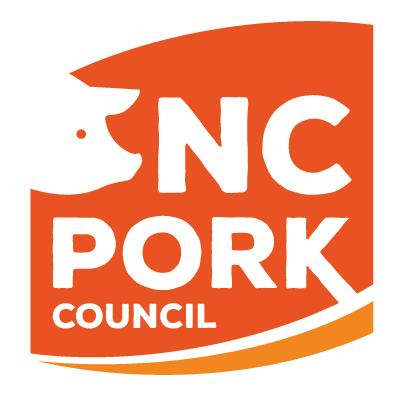Pig farmers reduce environmental impact | Activists push back
Greenhouse gas emissions (GHG) are a national (and global) concern, with blame being directed everywhere from fossil fuels to cow farts. Included in the blame game, at least in North Carolina, are pig farms.
Terms like “toxic,” “polluters,” and “cesspools” have been used to describe pig farms in North Carolina. According to activists, they really have a problem with how we handle manure. They view the lagoon and spray field system as an “antiquated” method that needs to be abolished. Activists have sued over “odor” and effectively shut down several farms. In these lawsuits, they never requested a change in the system (just millions of dollars) but did highlight alternatives that could be implemented.
Fast forward to recent months. Farmers have been working together with Dominion Energy and Smithfield Foods to implement years of research to cover lagoons, capture methane, and turn it into renewable natural gas, which in turn, produces electricity. Note, this was one of the alternatives encouraged by activists in court. Now they oppose it, with claims that it may make things worse.
Confused? Get ready to become more so.
Greenhouse gas emissions in America are caused by several things, the least of these, though is agriculture. According to the EPA, only 10% of GHG are caused by agriculture, with less than 4% caused by livestock. Swine emissions come in at a whopping .4% of total GHG emissions. That’s less than half of a percent.
Yet, .4% is not low enough. They want you to stop eating bacon for four-tenths of the total GHG emissions. Seriously.
Even so, hog farmers and the pork industry are actively working together to reduce that less than half a percent even further.
It gets better. According to the EPA, emissions can be reduced by:
Controlling the way manure decomposes to reduce nitrous oxide and methane emissions.
Capturing methane from manure decomposition to produce renewable energy.
Storing manure in anaerobic lagoons to maximize methane production and then capturing the methane to use as an energy substitute for fossil fuels.
Did you catch that? The EPA suggests capturing methane to produce renewable energy—the exact thing pig farmers are trying to do in North Carolina. But activists still oppose this EPA-recommended tactic. The EPA says, “Capturing methane and using it as an energy sources has a positive impact on the environment, as it avoids methane emissions and displaces conventional fossil fuels.”
Do you know what else the EPA recommends to reduce GHG emissions? “Fertilizing crops with the appropriate amount of nitrogen required for optimal crop production.” North Carolina pig farmers are required to test the nitrogen content of the manure they spread on crops before application to make sure they are not just following North Carolina regulations, but also following EPA recommendations.
The bottom line: activists are blaming us for GHG emissions, while also preventing us from reducing our impact. (We’re confused, too.)
What we do know is that farmers have been doing more with less for a long time. The U.S. swine industry has decreased emissions by 18% since 1990, largely in part because of their determination to always improve and willingness to adopt new technology. Over the past 17 years, North Carolina hog farmers have significantly increased their feed efficiency, resulting in reductions of nutrient content in manure lagoons at farms by 35%-78% and ammonia level reductions of 22%-54%, according to NPPC.
Let’s stop blaming pig farmers (or any farmers) for being the cause of all the GHG emissions. You know the old saying — when you point a finger at someone, there’s three more pointing back at you.
Activists should remember that, especially when flying around in their airplanes to take photos of pig farms. Transportation is the largest contributor to GHG emissions in America and aircraft rank near the top of the list. Who’s the real polluter here?
Farmkeepers Blog
The Farmkeepers is the official blog of NC Farm Families. It is here that words will flow, our voice will be heard, a stand will be made, and the farm families of North Carolina will be protected. In these posts, we'll set the record straight. You'll see the faces of the families who feed us. Here, you'll receive all the updates and news. It is here that we will fight for farmers and be the keepers of the farm in NC. We hope you'll join us. Follow along on social media and by joining our email list.




















